
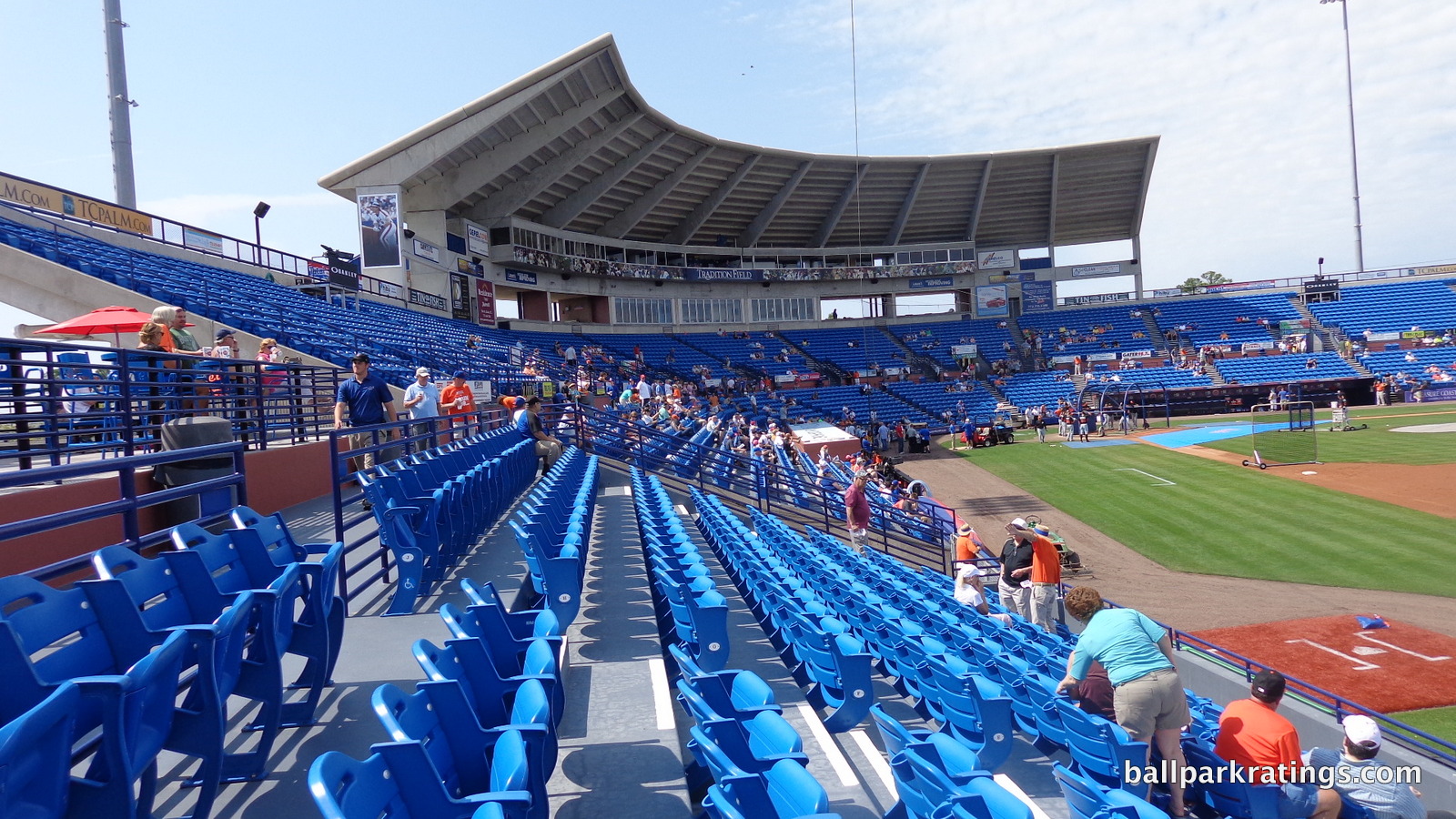
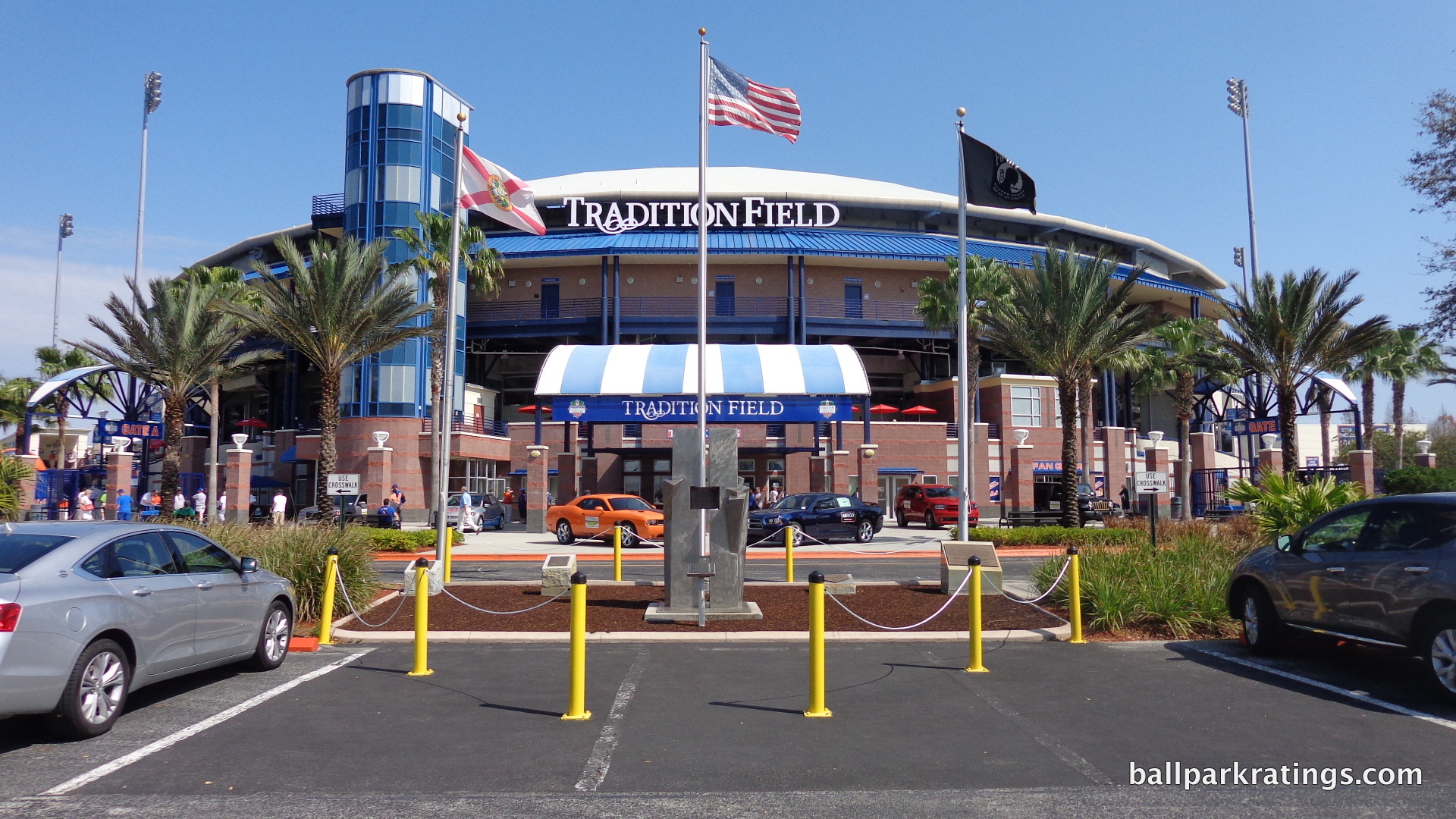

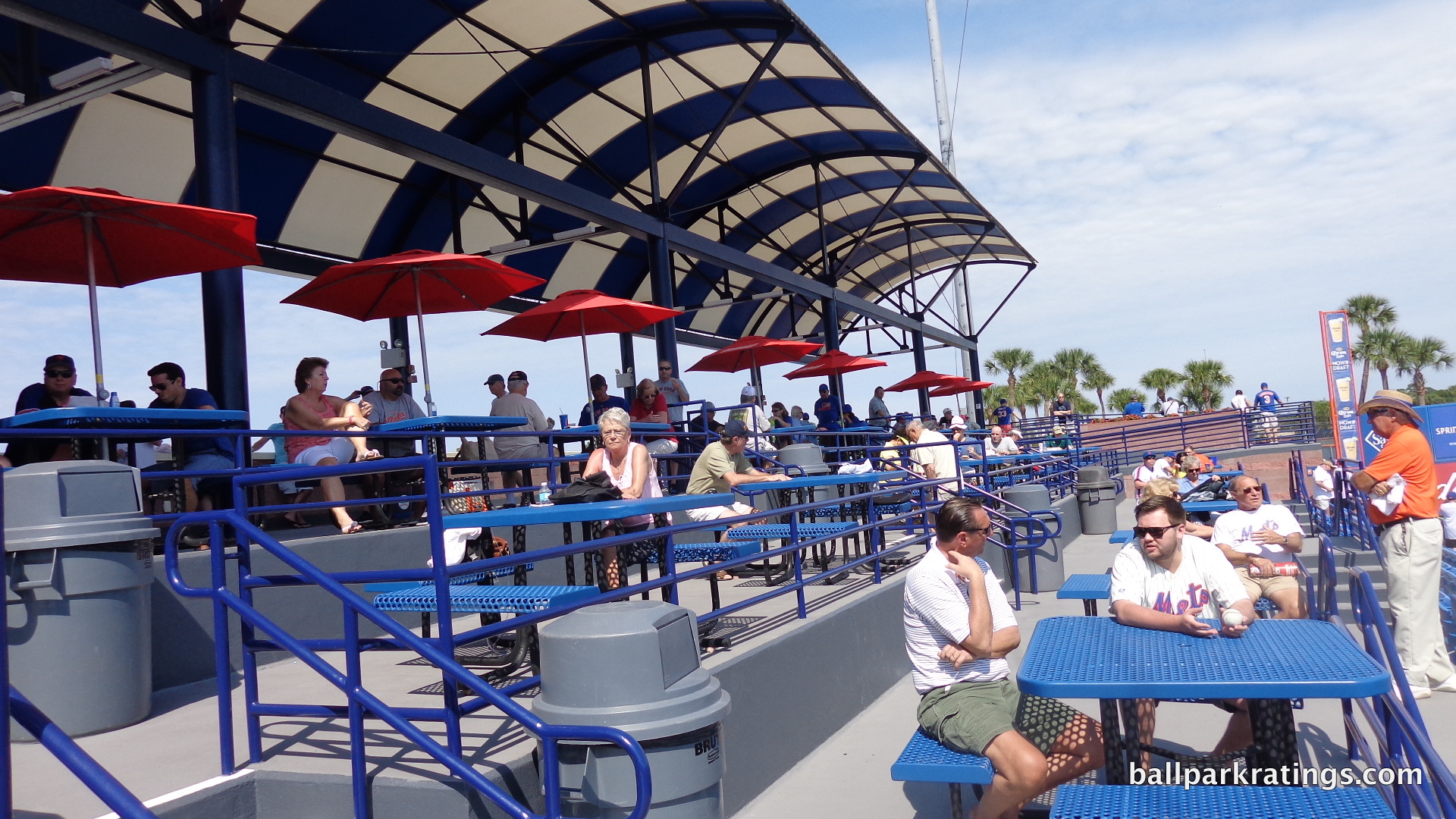


First Data Field (Pre-Renovated Spring Park)
| Setting | 7/10 | 2 Thumbs Up Star | Location/Access | 7/10 | 2 Thumbs Up Star |
|---|
| Architecture & Aesthetics | 17/28 | 2 Thumbs Up Star |
|---|---|---|
| Exterior Design/Aesthetics | 6.5/10 | 2 Thumbs Up Star |
| Interior Aesthetics/Visuals | 9.5/15 | 2 Thumbs Up Star |
| Concourse Aesthetics | 1/3 | 2 Thumbs Up Star |
| Functionality & Essentials | 15/25 | 2 Thumbs Up Star |
|---|---|---|
| Sightlines | 7.5/10 | 2 Thumbs Up Star |
| Seat Comfort | 3.5/5 | 2 Thumbs Up Star |
| Concourse Functionality | 2/7 | 2 Thumbs Up Star |
| Scoreboards/Tech | 2/3 | 2 Thumbs Up Star |
| Amenities & Features | 14/20 | 2 Thumbs Up Star |
|---|---|---|
| Concessions | 8.5/10 | 2 Thumbs Up Star |
| Premium/Group Seating | 1.5/4 | 2 Thumbs Up Star |
| Social Spaces | 3/4 | 2 Thumbs Up Star |
| Kids Areas | 1/2 | 2 Thumbs Up Star |
| Atmosphere, Vibe, & Policies | 13/17 | 2 Thumbs Up Star |
|---|---|---|
| Ballpark Personality | 8/10 | 2 Thumbs Up Star |
| Fan Support | 3/5 | 2 Thumbs Up Star |
| Ballpark Policies/Staff | 2/2 | 2 Thumbs Up Star |
| Bonus | 6 |
|---|---|
| Final Score | N/A |
|---|---|
| Ranking | N/A |
|---|---|
Mets Make the Most Out of Tradition
Despite cramped footprint and ugly 80s superstructure, Mets provide decent amenities, relatively acceptable ballpark experience
March 19th 2009: Lower Box
March 9th 2010: Lower Box
March 10th 2014: Lower Box
Note: The review is from prior to the 2020 renovations. See the new page for the review of the Mets spring training park in its current (better) form.
By: Cole Shoemaker
The central irony of the Mets’ spring training facility is that its grand, imposing architectural vision of a mini-me Shea Stadium circa 1988 led to the limited feasibility of large-scale renovations in the future.
This was no Ed Smith Stadium or Charlotte County Stadium. It was nothing like the other basic two-story spring training edifices built during the 1980s. This park had ramps, four stories of drab gray concrete, the largest press box in spring training, clubhouses accessible in dugouts for both teams (a big deal), and a sprawling cantilevered roof.
While it arguably wasn’t until Hammond Stadium in 1991 when we saw a true “super spring training complex,” replete with a beautified exterior aesthetic scene and tropical fountain motif, the Mets’ Thomas J. White Stadium undoubtedly represented a step forward and was probably the best of the 1980s.
The construction cost was $11 million in 1988, compared to Compadre Stadium ($1.6 million in 1986), Charlotte County Stadium ($5 million in 1987), Plant City Stadium ($5.7 million in 1988), Ed Smith Stadium ($8.5 million in 1989), and even Space Coast Stadium ($6.2 million in 1994), which got rave reviews upon opening. No one says this today, but the ballpark now known as Tradition Field was the Steinbrenner Field of 1988.
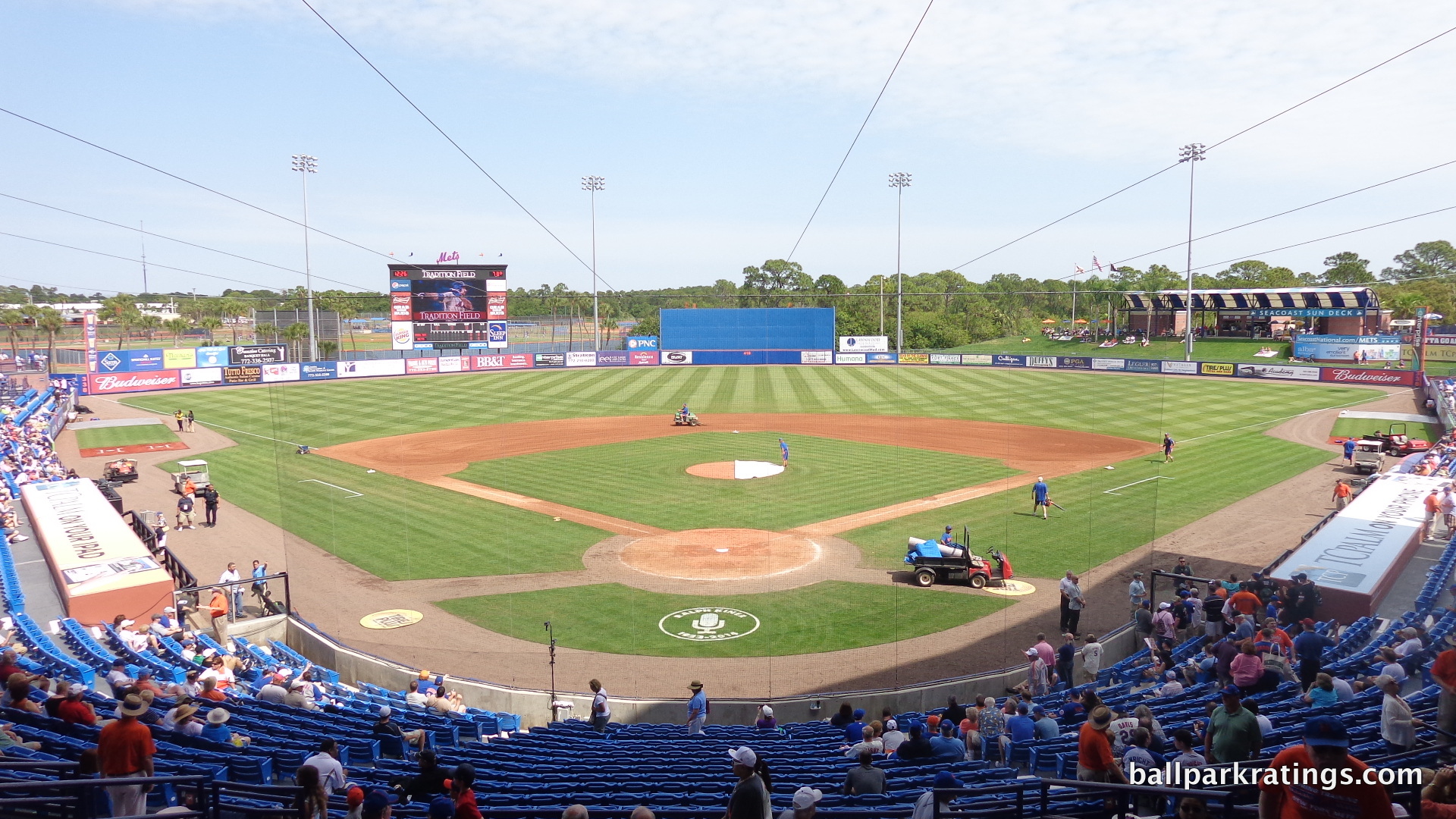
The Mets’ just won a World Series, and they felt entitled to a grand mini-me on Florida’s treasure coast. Thomas J. White’s design mimicked Shea Stadium as much as an 80s spring training ballpark could, from the playing dimensions and blue fold-down seats to the unabashed large-scale construction technique and exposed concrete.
However, that emulation came at a price. With that cantilevered concrete roof and four story concrete exposed exterior, this 1980s monstrosity couldn’t easily be retrofitted to meet modern sensibilities like some others.
This was no intimate two-story concrete icebox that could be beautified with one brushstroke, like Ed Smith Stadium with the Orioles. The Mets, unfortunately, built a large, imposing concrete monster that would have to be demolished and rebuilt if it were to truly meet 21st century architectural trends.
By the early 2000s, when their 15-year lease was about to expire, the Mets wanted to renovate the now archaic looking building. They were partial to Port St Lucie, but realized this was a facility that couldn’t get rid of its more significant age marks without completely leveling the structure. Cost wise, it just made sense to cosmetically make the best of it.
Without resorting to demolition, you really have to hand it to the Mets for doing their best. They’ve yielded just about as much benefit in major renovations and year-to-year upgrades per dollar spent as they could.
Tradition Field will never be in the top half of spring training ballparks, but they maintained the ballpark well. The 2004 renovations added a nice brick façade to the uncloaked concrete, as well as a Tiki bar in left field and a berm beyond the right field fence. They also added luxury suites in those random empty spaces between the back of the concrete façade. In 2012, they added a giant video board and a new party area in right field. The Mets had such a sanguine perspective on their Port St. Lucie pad that they added room for a potential second tenant (well, they just wanted baseball to stay on the Treasure Coast).
The Mets really excel in putting their cramped concourse space to the best possible use. Hoon & White architects (boy, they really took off, huh?) built the main concourse above street level. This means it would be more expensive to expand the concourse.
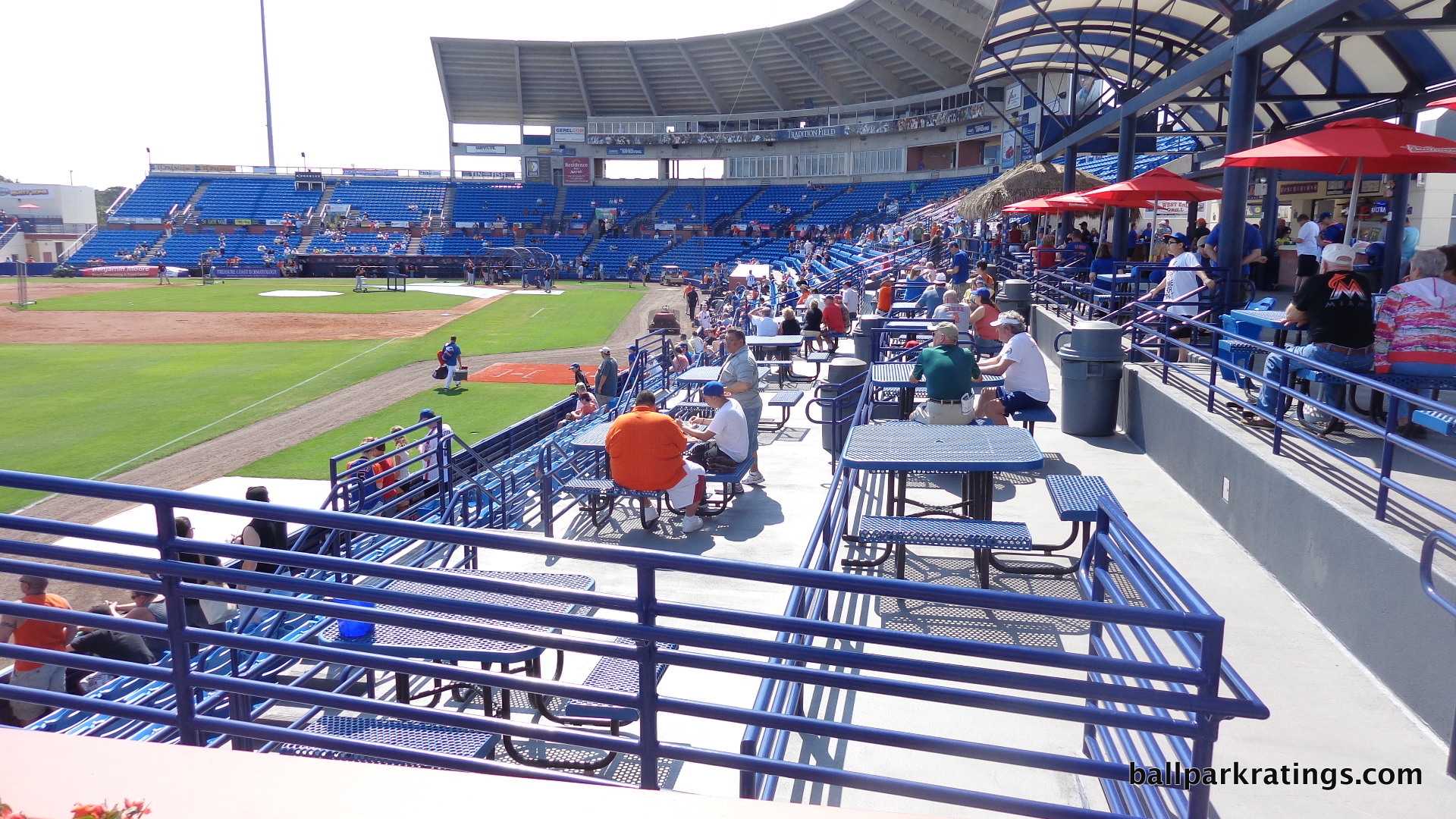
Naturally, in my estimation, it measures as the narrowest concourse in the Grapefruit League today; but the point is the Mets do well in filling these small spaces with food options, tables, bars, and other small enclaves to gather. While the Mets spread outward down the lines with their two party areas, they have made the best with the small space originally allotted as well.
Sure we still have that ugly cantilevered roof and concrete galore, but you could argue it is quite a unique place to see a game.
Ultimately though, Tradition Field illustrates the irony that if you go big in one era (the 80s), you may be unable to architecturally adjust as effectively in the next. Ballparks listed like the rudimentary Ed Smith Stadium and Charlotte Sports Park were just big concrete blocks with the team’s insignia on the outside, so they were able to become far superior through renovations, because there just wasn’t much there in the first place. *Edit March 2017: It appears Tradition Field will go through another round of renovations in 2018-2019 (at the tune of $60 million, not coincidentally more than other spring training renovations), but the lasting impression will probably remain intact.
Setting
Access/Location/Local Scene:
Fairly isolated on the Treasure Coast, Tradition Field isn’t known for must-see spring training. In an area formerly characterized by cow pastures, this formerly secluded patch of land now has some strip malls and commercial development within a mile radius.
The original plan was much more ambitious. Thomas J. White Stadium was intended to be a destination for baseball and entertainment.
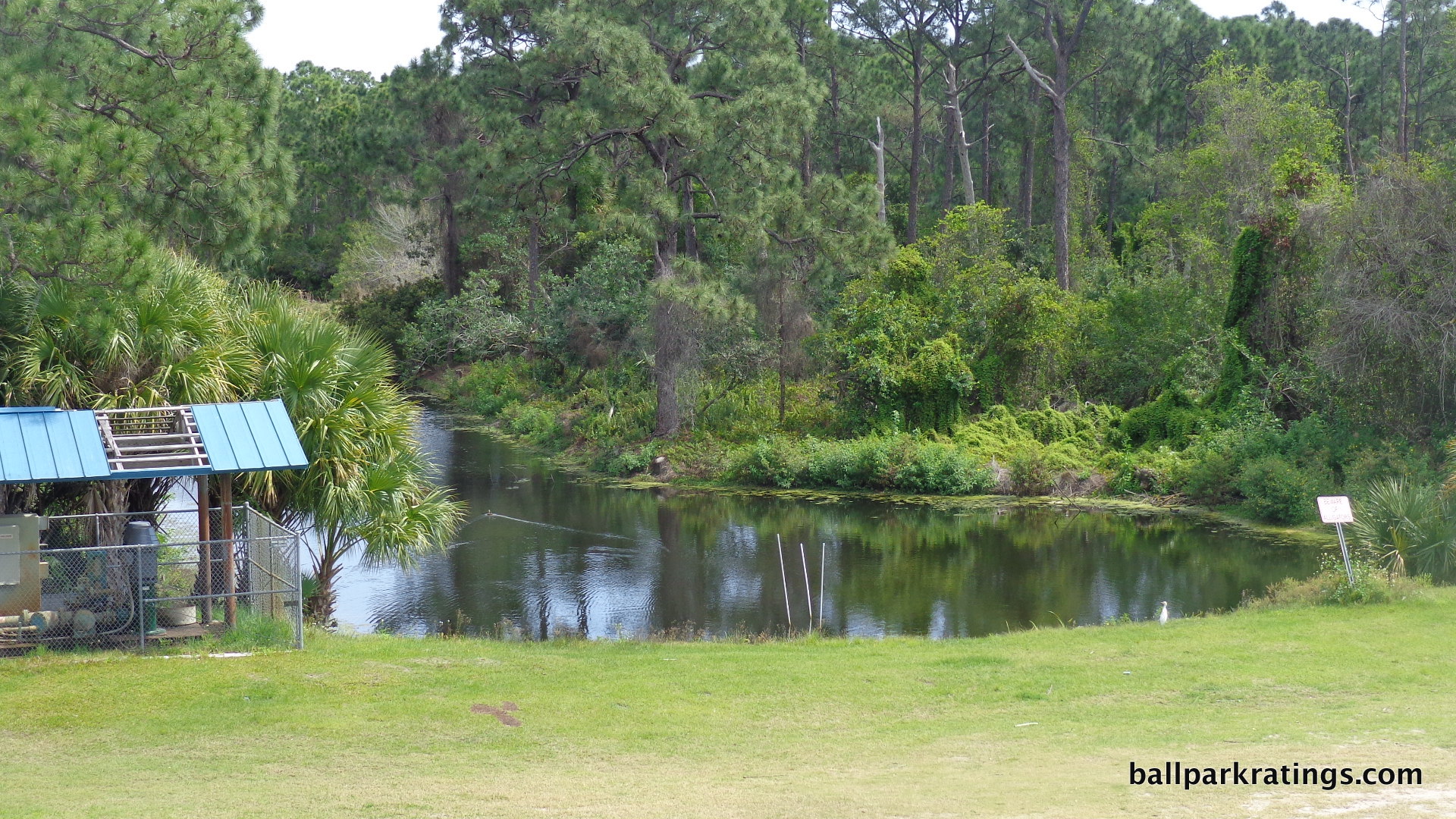
In reality, we have the run of the mill chain restaurants within a mile just south of the ballpark, nearby PGA village. The ballpark is located off of I-95 in what is a fairly quiet town, north of the glamour of Boca Raton or the glitz of Palm Beach. Beyond right field, you still get remnants of a rural swamp sensibility, as the lake even warns you about alligators. Love it!
The drive can sometimes be difficult, but in the scheme of Grapefruit League parks, Tradition Field is in the middle of the pack, as it is still closer to restaurants and hotels than some.
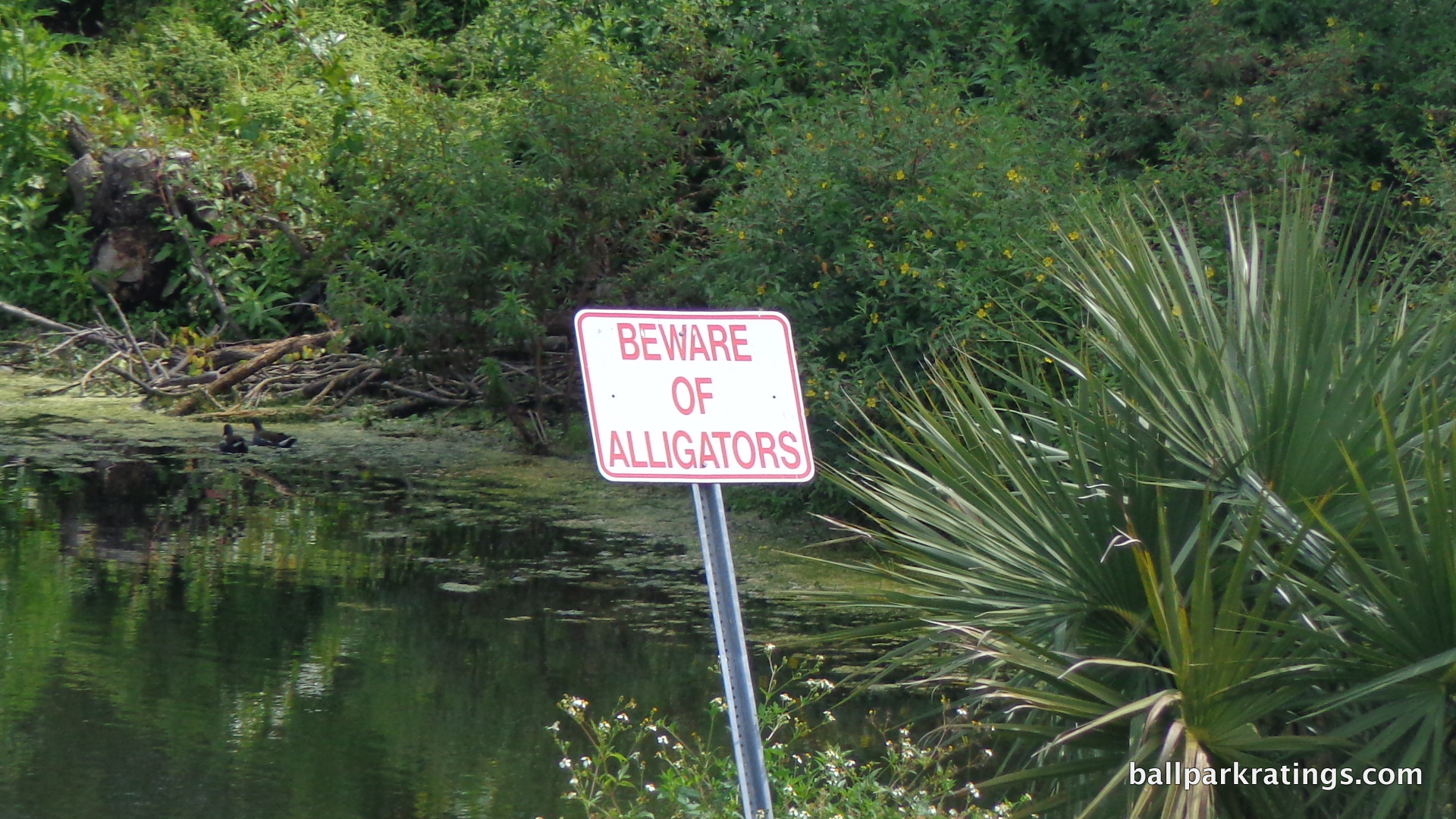
Score: 7/10
Architecture & Aesthetics
Exterior Design:
More resembling a concrete skeleton than a ballpark, Tradition Field was undoubtedly an aesthetic eyesore when it opened in 1988. Renovations revitalized this architectural blight with warm retro brick infused with a Mets shade of blue, resulting in quite a flavorful color scheme.
While no one will mistake this for a top tier exterior design, Tradition Field is reasonably attractive on the outside. It’s also a refreshing departure from the ubiquitous “Spanish Mission/Mediterranean” designs seen throughout the Grapefruit League.

Since the ballpark solely consisted of horizontal and vertical concrete beams on the outside, the goal of the renovation was to literally fill in the open “gaps” and then cover the skeleton with a façade. They had to grapple with that ugly concrete cantilevered roof as well. In attempting to mitigate all of this lifelessness, the Mets came away successful.
Red brick covers the base of the ballpark and forms the outside of the suites on the third level behind home plate. Formerly, the area between the press box and the top of the 200-level was empty space. But the enhancements are mostly fruitful because of the use of blue and white.

The roof clashes with the rest of the exterior, and the Mets took steps to address this. Anchored by blue beams, an attractive blue canopy was constructed directly under the white roof. The highlight of the exterior design is the strikingly modern elevator tower, consisting of different shades of blue and white. Note how it matches the color pattern of the blue and white awning covering the ticket booth. The blue canopy and the subtle shades of white soften the imposing effect of the roof.
The elevator tower also adds some nice asymmetry, in what would otherwise be a rather standardized look. Attractive landscaping and a twin towers 9/11 memorial (which I’ll get to later) also add some flare. It still doesn’t look like an intimate facility, but it’s all rather well done.
Score: 6.5/10
Interior Aesthetics:
While not as drastic as the changes on the outside, the enhancements also rendered some welcome improvements with the interior design.
But we must first address Tradition Field’s signature feature, and most see it as an unfortunate one. The elephant in the room is that towering concrete cantilevered roof, much more so on the inside than the outside. Functionalism defined much of the original design, and this roof is the most conspicuous example of that. The dreary gray concrete and austere structure utterly dominates the inside of Tradition Field; to the point where there was really nothing the Mets could do to pacify this sensibility. After all the renovations, it still defines the park. This automatically limits the attractiveness of the interior design.

So basically, that is the dominant aesthetic, so the enhancements are just patchwork. That said, the Mets did make some nice additions, and there are some natural elements of the ballpark I do like.
The major aesthetic of the enhancements is the continuation of the blue and white stripe color coordination seen on the outside. Both the canopy covering the tiki bar down the left field line and the berm in right field use the motif, identical to the awning over the ticket booth behind home plate on the outside. While a great amenity, the new picnic and bar area down the right field line didn’t add anything aesthetically.
Tradition Field’s backdrop isn’t considered very notable, nor is the outfield scene in its entirety. The walls are too cluttered with ads, partially nullifying the ballparks’ pastoral appeal. The view beyond left field is rather banal, characterized by practice fields. The blue batters’ eye nicely matches the rest of the ballpark, but doesn’t do much.
However, the outfield scene in right field might be the most attractive part of the interior.

The right field berm is frequently mentioned as one of the most attractive in the Grapefruit League. Only Bright House Field and Joker Marchant Stadium can also attempt to claim that mantle. The lush grass and trees are effectively nestled in with the swamp next door. While no one would mistake Tradition Field as an aesthetic marvel, the right field extension is the most attractive part of the renovations.
The view behind the berm is the highlight in my opinion. Beyond the well-appropriated berm, and throughout the right field area, we have a profusion of forest greenery, which nicely contributes to the rural swampy theme I get when I go to Tradition Field.
The Mets didn’t do anything about the dominant aesthetic of the ugly concrete canopy, but some of the supplementary features are nice, especially the right field scene.
Score: 9.5/15
Concourses:
Both aesthetically and functionally, the main concourse is Tradition Field’s primary flaw. While renovations beautified the aesthetic scene on the exterior and interior, the concourse system is still bland. Other than a series of historical Mets posters, the concrete hallway is rather unadorned. As we’ll get to, the Mets make great use of these limited spaces, but the concourse itself is comparatively unattractive.
Score: 1/3
Total: 17/28
Functionality & Essentials
Sightlines:
Obviously, baseball-only facilities don’t have much differentiation in the quality of their sightlines, and that’s become a truism for these intimate spring training facilities. All of these parks provide great player-fan interaction right on top of the field. There’s not a bad seat in the house, people say.
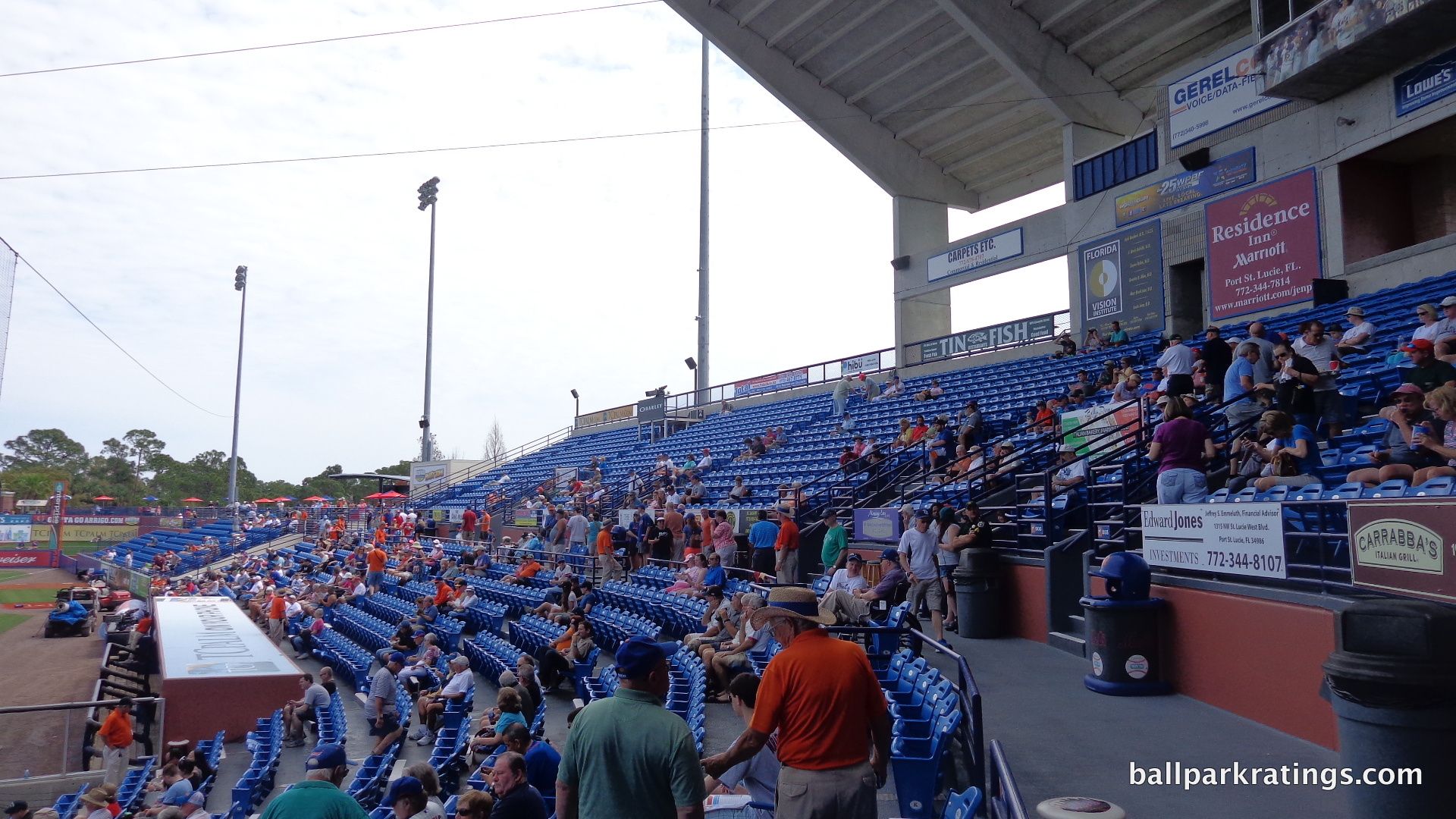
That’s not as true as it could be for Tradition Field, in what is mostly a function of the era. Along with Hammond Stadium, the Mets’ have the steepest grandstand design in the Grapefruit League, as sitting in the back row of the second deck is akin to sitting in the front of the second deck at a major league facility. It’s pretty pronounced, as there is a noticeable contrast between sitting a few rows behind the dugout here, than say Lakeland (an old facility) or Clearwater (a new one).
You just don’t feel as close to the action as you should. It’s an odd design choice that seemed to be in vogue from the late 80s to early 90s, but not really before or after. On the plus side, the steep grade assures a taller individual won’t block your view. The mediocre field proximity is exacerbated by the bullpens in play down the lines. Tradition Field has more foul territory than necessary.
Timing isn’t totally against Tradition Field though. Opening in 1988, it came after that dreadful trend of not rounding the backstop. For reasons I’m having trouble articulating, a number of ballparks that opened after the trend-setting Osceola County Stadium featured a geometrically linear design home plate, where the backstop extended from dugout to dugout in a straight line, then proceeded to jut out towards the foul lines at a straight angle. Needless to say, this led to some odd viewing angles.
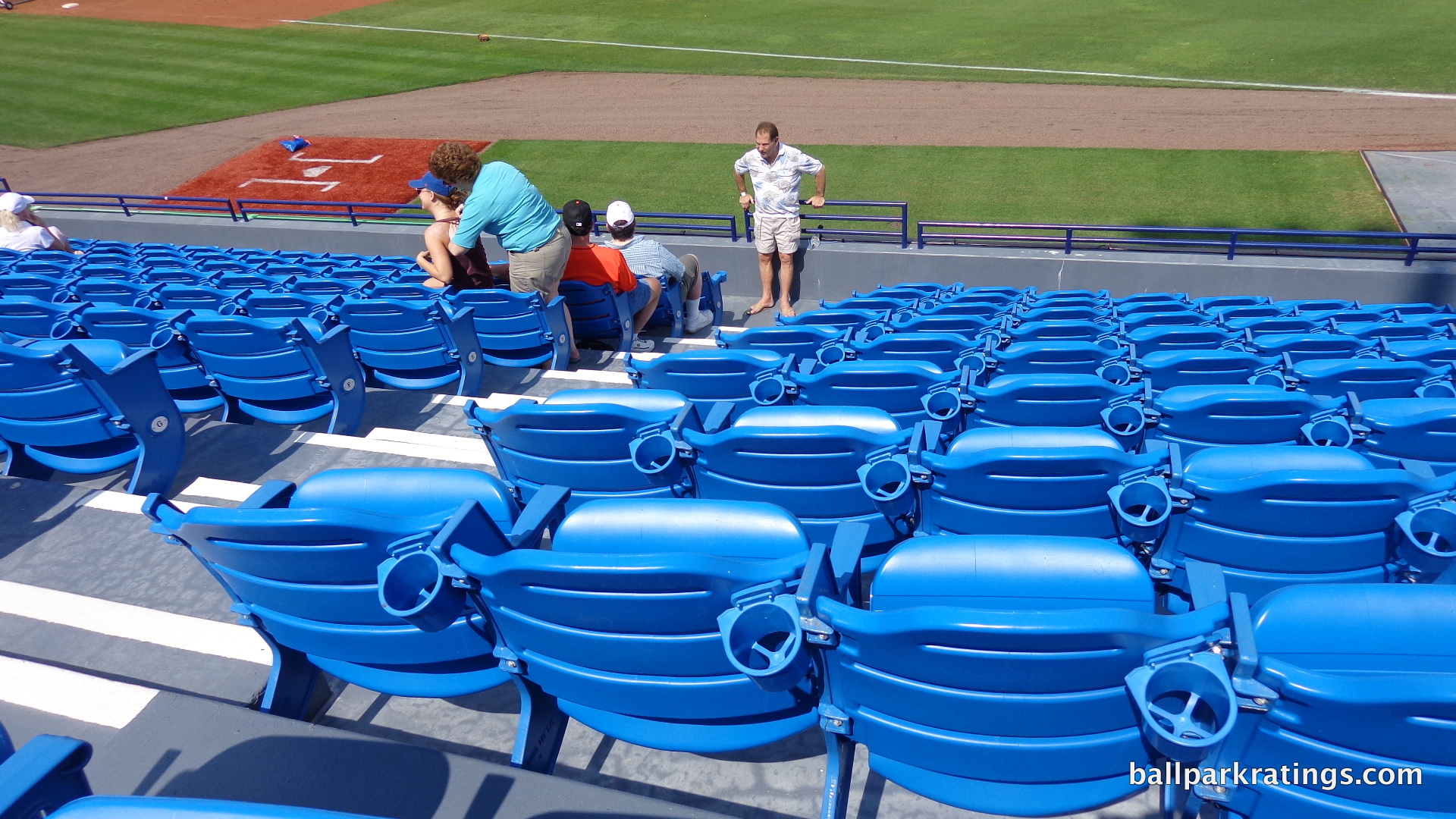
Luckily, the Mets’ facility features above average seating geometry, aided by recent renovations. The new seats installed down the 1st base line could be angled more aggressively, but they are generally well directed. However, some seats at the far end of the 3rd base line (sections 122-124) feel too far from home plate, as the entire section should have been reoriented. There are only three rows of them, but the seats are not oriented toward home plate.
While I believe this is disclosed, camera wells partially obstruct views of some of the higher upper reserved seats in certain areas.
Score: 7.5/10
Seat Comfort:
New seats were added throughout the main seating bowl in 2004, so Tradition Field excels to a certain degree in this department. Further enhancements in 2012 replaced the bleachers down the right field line with new fold-down stadium seating.
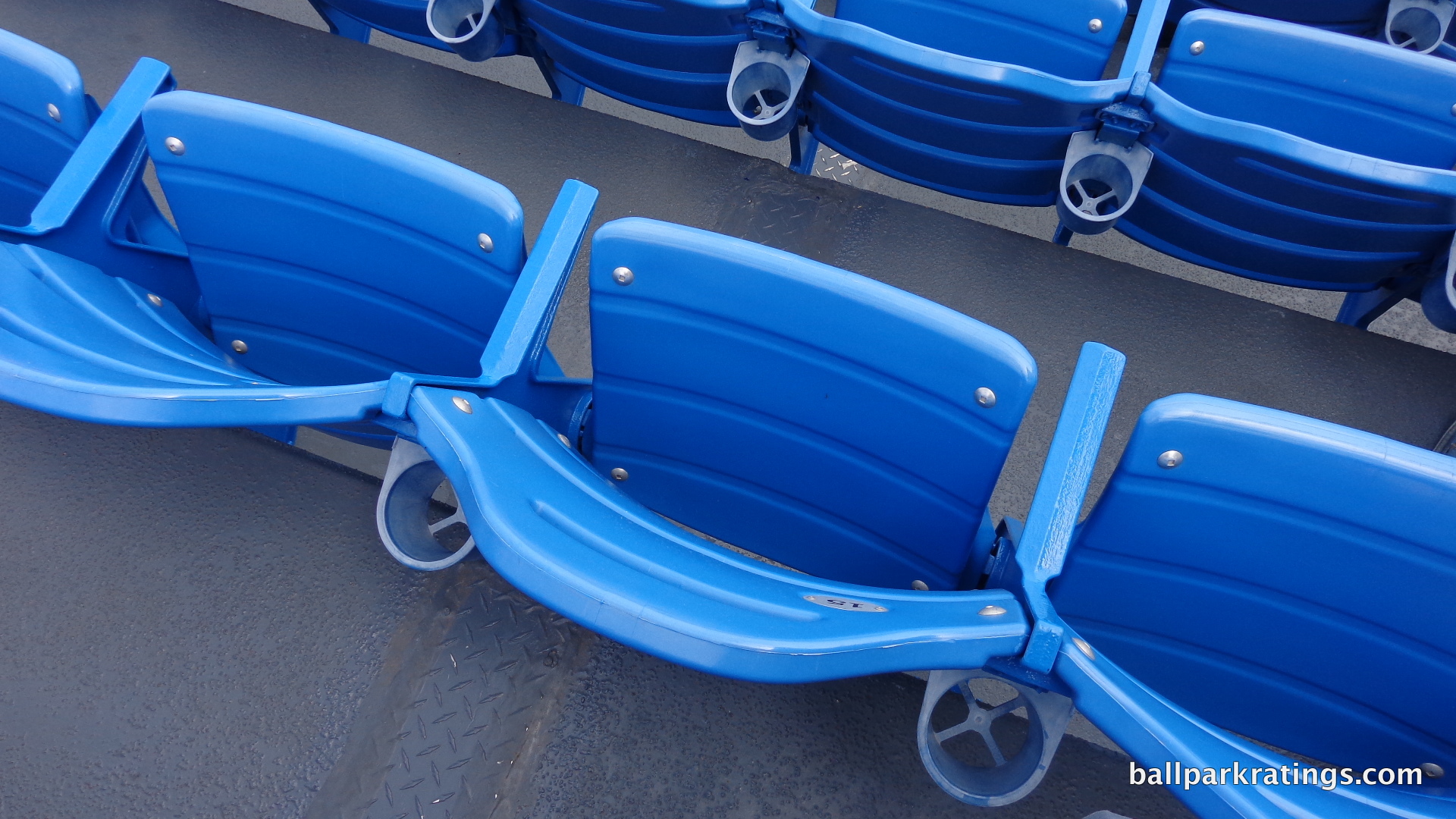
I was generally impressed with the width and the amount of legroom of most of the seats here. Perhaps this is because the preexisting seating bowl was relatively large, so the Mets had a lot of space to work with. Since the Mets don’t draw particularly well, maybe they figured they could use this space to create slightly more comfortable seating instead of cramming as many narrow seats as possible into the ballpark.
However, this is all conjecture, as I don’t verify for a fact that the width and the legroom is better here than any other renovated ballpark’s seats. As we know, there usually isn’t much differentiation here, unless we’re talking about Dunedin Stadium vs. Salt River Fields.
All seats at Tradition Field have cup holders.
Score: 3.5/5
Concourses:
Failing to sport a field view or circulate the ballpark, Tradition Field’s Achilles’ heel is its extremely narrow, haphazardly segmented, and poorly articulated concourse system. Measuring roughly 10-15 feet wide on average, this is the flaw of flaws, limiting space for concessions, lounges, bars, sitting areas, and other amenities. As alluded to in the introduction, the Mets do their best with what they have, but this is the reason why Tradition Field will always have a ceiling on how high it scores.
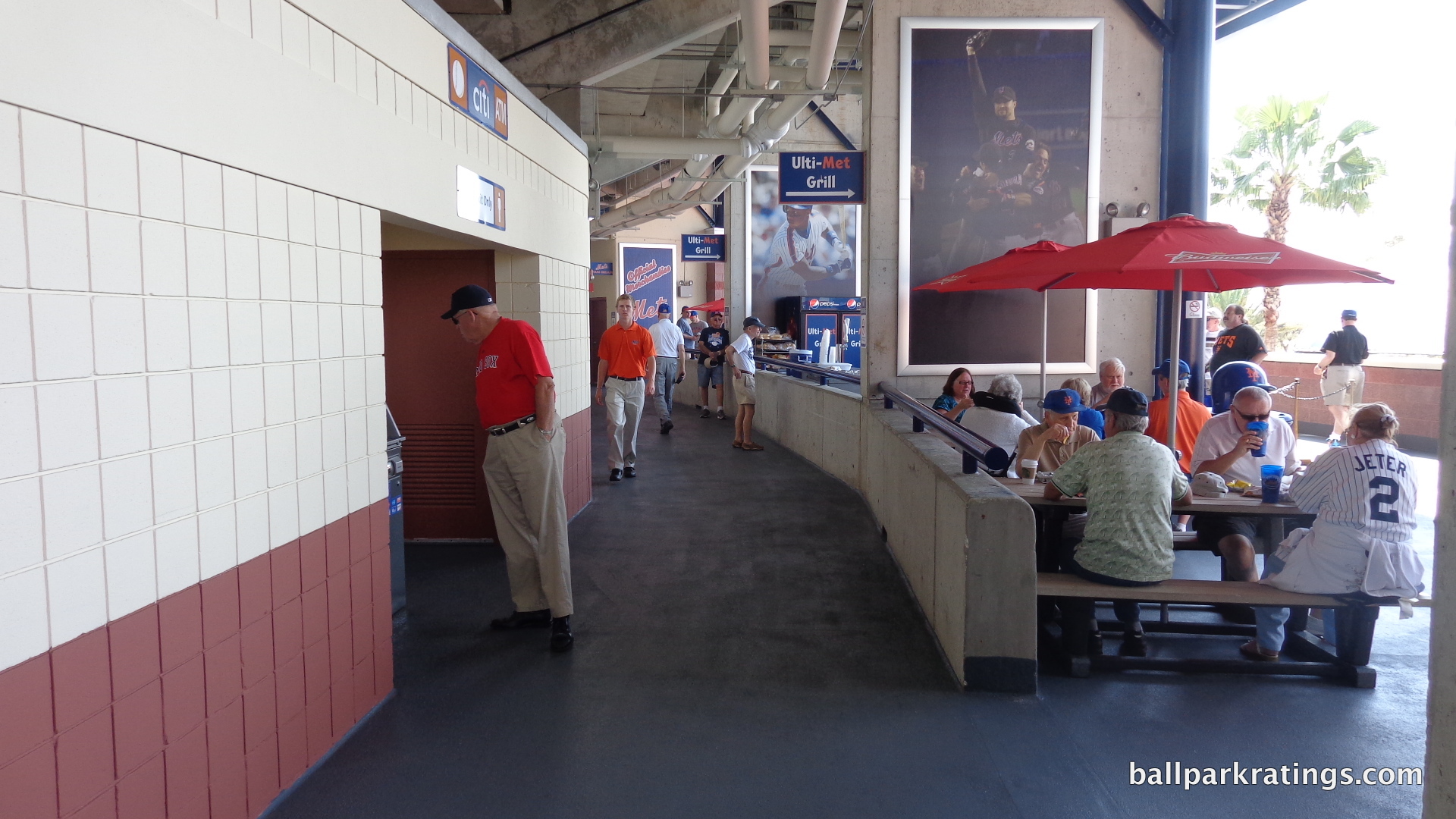
First of all, the main concourse is not at street level, and most fans enter through the two gates behind home plate, from which stairs/ramps take them to the grandstand one story above on the concourse level. While many parks have shown this doesn’t need to be noticeably cumbersome, I’m not sure why the concourse isn’t at street level here.
The main problem is width, to the point where becomes comical at times, at least for a park that hosts a major league baseball team. It’s essentially a glorified hallway. There are certain spots where a four-person concession line would completely block the concourse. Fans do have spatial recourse via enclaves such as the Ulti-Met Grill (you’d think that this play on words for a Mets’ restaurant would have occurred before) and a bar area.
Circulation is not straightforward, either. This hallway-like concourse system extends from dugout to dugout but becomes more maze-like down the lines. Once fans reach the “Bella Roma” market kiosk and a few picnic tables down the third base line, there are twists and turns that take you to your seat by the left field Tiki bar. The concourse by the Tiki bar is a little more spacious.
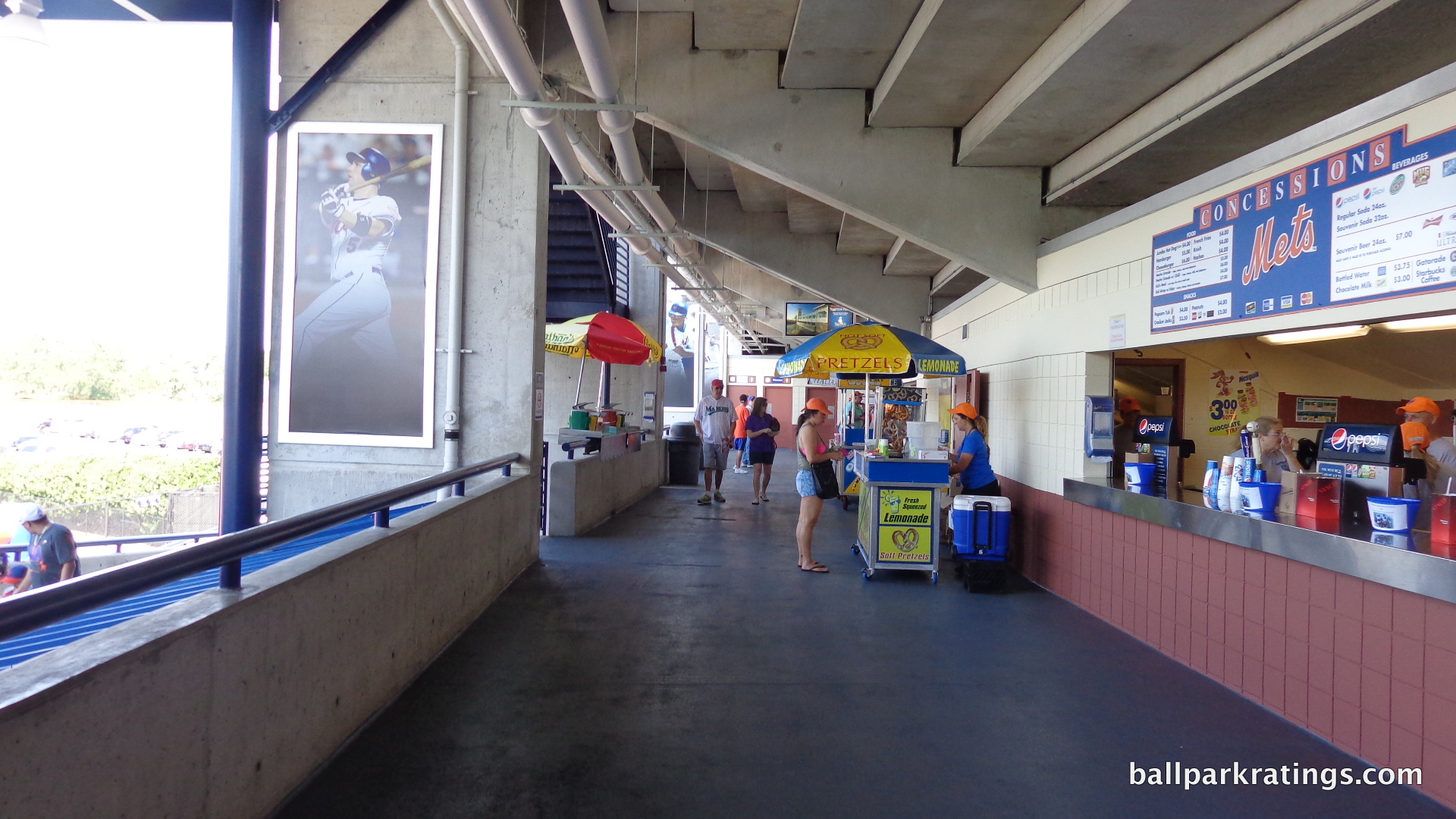
Circulation halts completely on the 1st base side, as fans must use the cross-aisle down the right field line to access the right field party zone or the berm area. If you are looking to get a drink or a bite to eat during the game, this party area is a nice place to be. Featuring tables overlooking the field, there is plenty of space here with sparse crowds mainly congregating the congested main concourse. The new walkway continues toward the berm.
Score: 2/7
Scoreboard System:
In 2012, the Mets installed a new high-definition scoreboard at Tradition Field. The new videoboard has full replay capabilities and features both lineups at a time. However, they still use an electronic line score and use that same light bulb technology for balls, strikes, outs, pitch counts, time, and temperature. I’m pleased to report that they have a pitch meter.
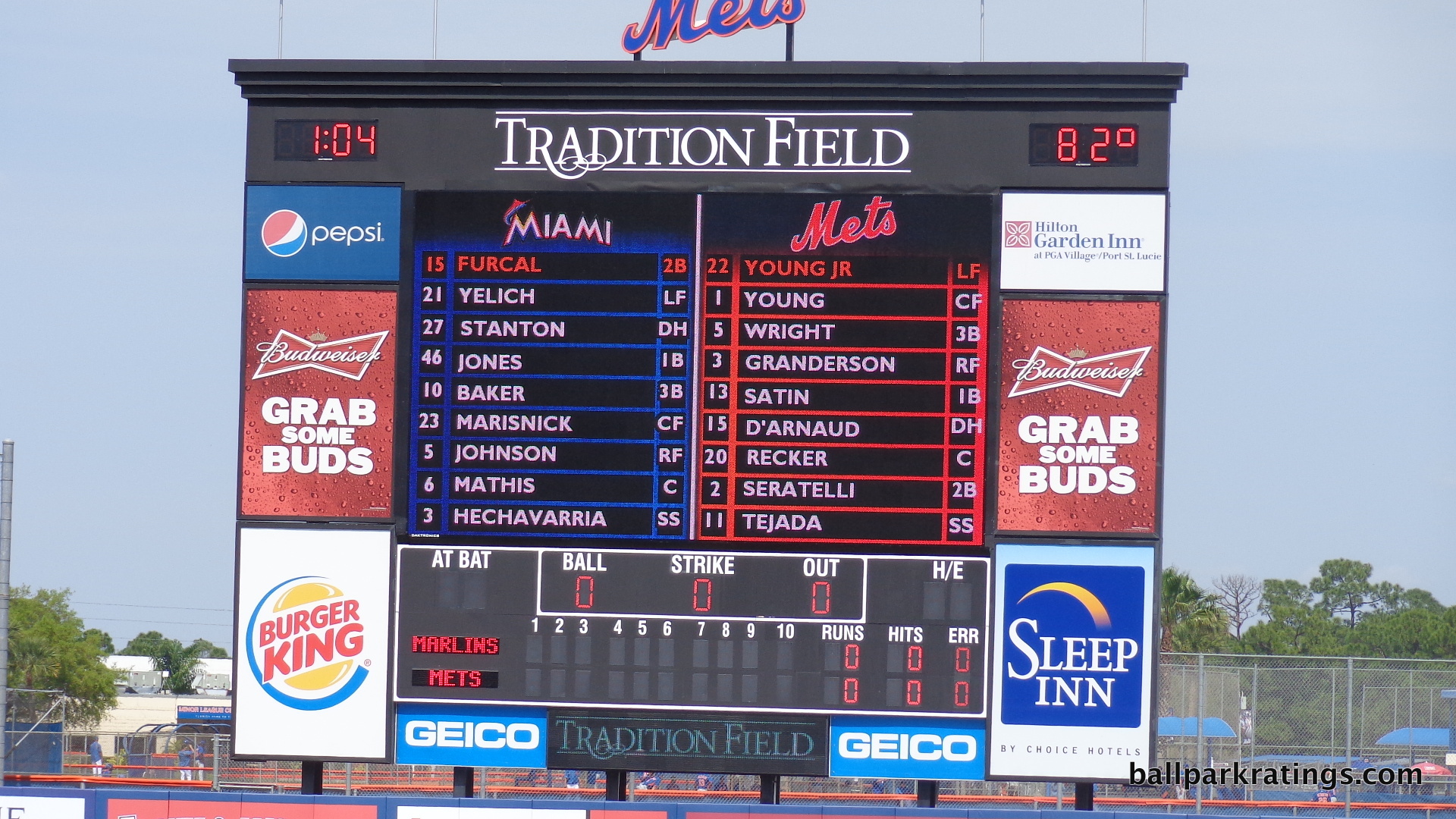
Score: 2/3
Total: 15/25
Amenities & Features
Concessions:
While there is a ceiling on how high the Mets’ can score here due to a lack of cooking space, Tradition Field’s concessions are memorably impressive. The food is high quality.
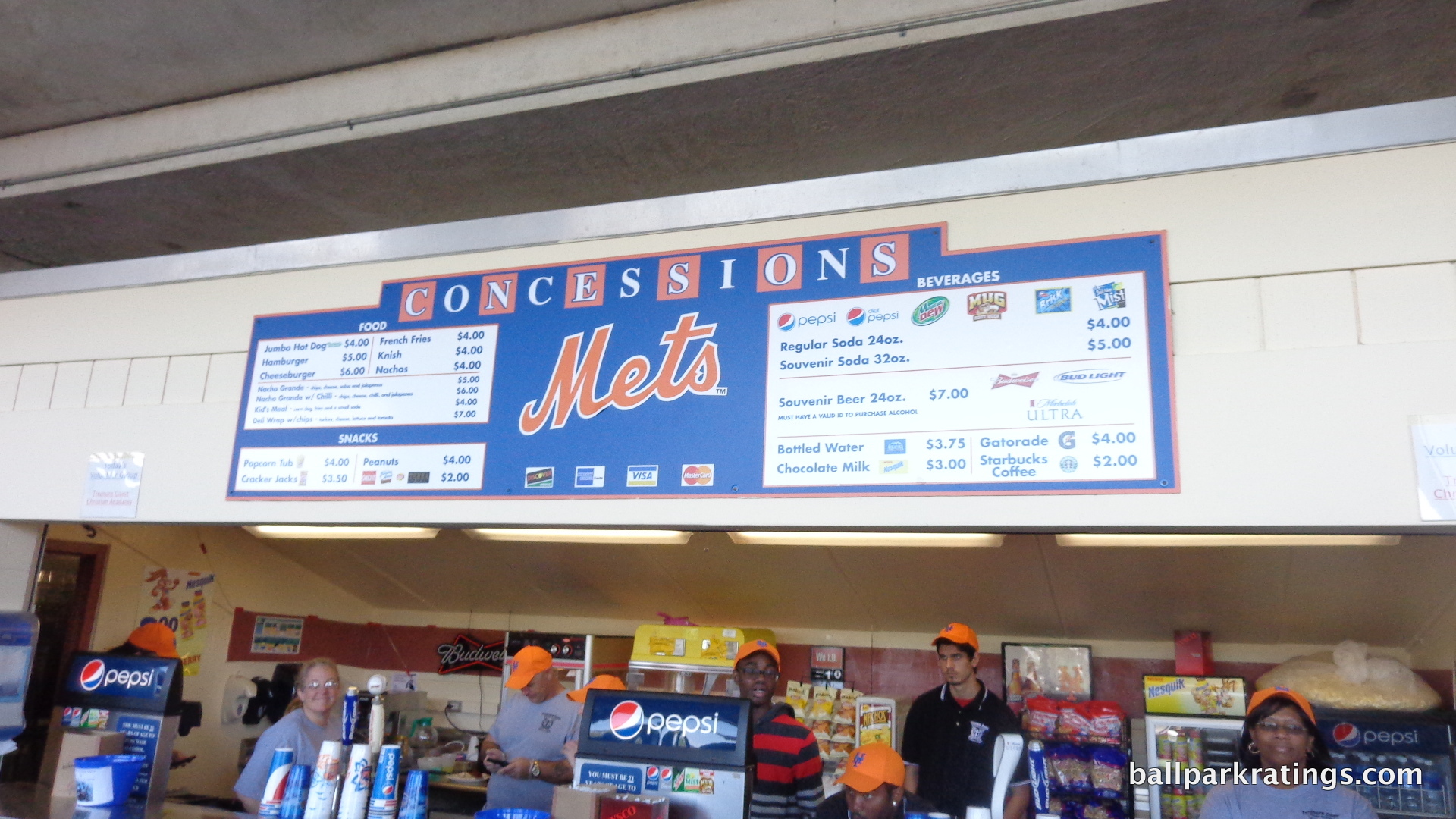
First of all, Tradition Field features true grilling spaces rarely seen in spring training ballparks. You’ll often see ballparks claim they grill their foods, but Tradition Field does so in front of you. At the Ulti-Mets Grill and “The Dugout” concession stand, you’ll see hot dogs, hamburgers, chicken, New York cheesesteaks, Italian rolls, sausages, and sliders made right in front of you. They’re high quality too. Pretzels are hand made. In 2009, I remember crepes being made right in front of me.
Regular stands include Nathan’s hot dogs, knishes, and deli wraps. Frank and Al’s pizza is a local Port St. Lucie joint that gets high reviews, a far cry from the Little Caesar’s or ordinary ballpark pizza seen across the Grapefruit League. Other interesting items on the main concourse include deep fried Oreo’s, Italian ice, and Taco in a Helmet. The only thing that’s not so cool in my opinion is the (apparent) replacement of Carvel with Dippin’ Dots.

On the concourse just past 3rd base, the Mets always set up another high quality Italian concession stand from the local area. In the past, it has been “Bagel brothers.” When I last went in 2014, it was “Bella Roma: Bakery. Market. Deli.” The delicious looking fare includes “imported Italian products,” such as deli meats, cheeses, fresh mozzarella, premium Italian sausages, high quality salads, turkey clubs, Italian subs, Cannoli, Cartocci, and Lobster Tail.
Behind the Tiki bar, the Mets have always had a regular concession stand serving a truly novel variety of food items. The consistent menu includes onion rings, mozzarella sticks, shrimp, Caesar salad, “dirt in a helmet,” fried pickles, corn dogs nuggets, and fruit salads. While I can’t vouch for the quality here, that is quite the motley selection. I heard they also added a BBQ stand in right field, a nice enhancement to bolster the variety of food categories.
Finally, the beer, wine, and liquor selection is impressive at three separate bars, despite not equaling that of Hammond Stadium, Ed Smith Stadium, or Bright House Field.
Overall, this is an excellent effort by the Mets, one that truly stands out in all of the Grapefruit League given the spatial constraints.
Score: 8.5/10
Premium Seats/Party Decks:
For a ballpark built in 1988 that looked like this, Tradition Field provides a requisite number of areas for groups and premium paying fans.

Behind home plate below the press box (on the “suite level”), you’ll note a number of private, boxed-in areas. There are 3 glassed-in luxury suites flanked by 2 rather rudimentary open-air picnic party decks. It appears each area can be divided in half, so there could be 4 picnic party decks. These are very basic, appearing to consist only of the same picnic tables you see in the Ulti-Mets Grill.
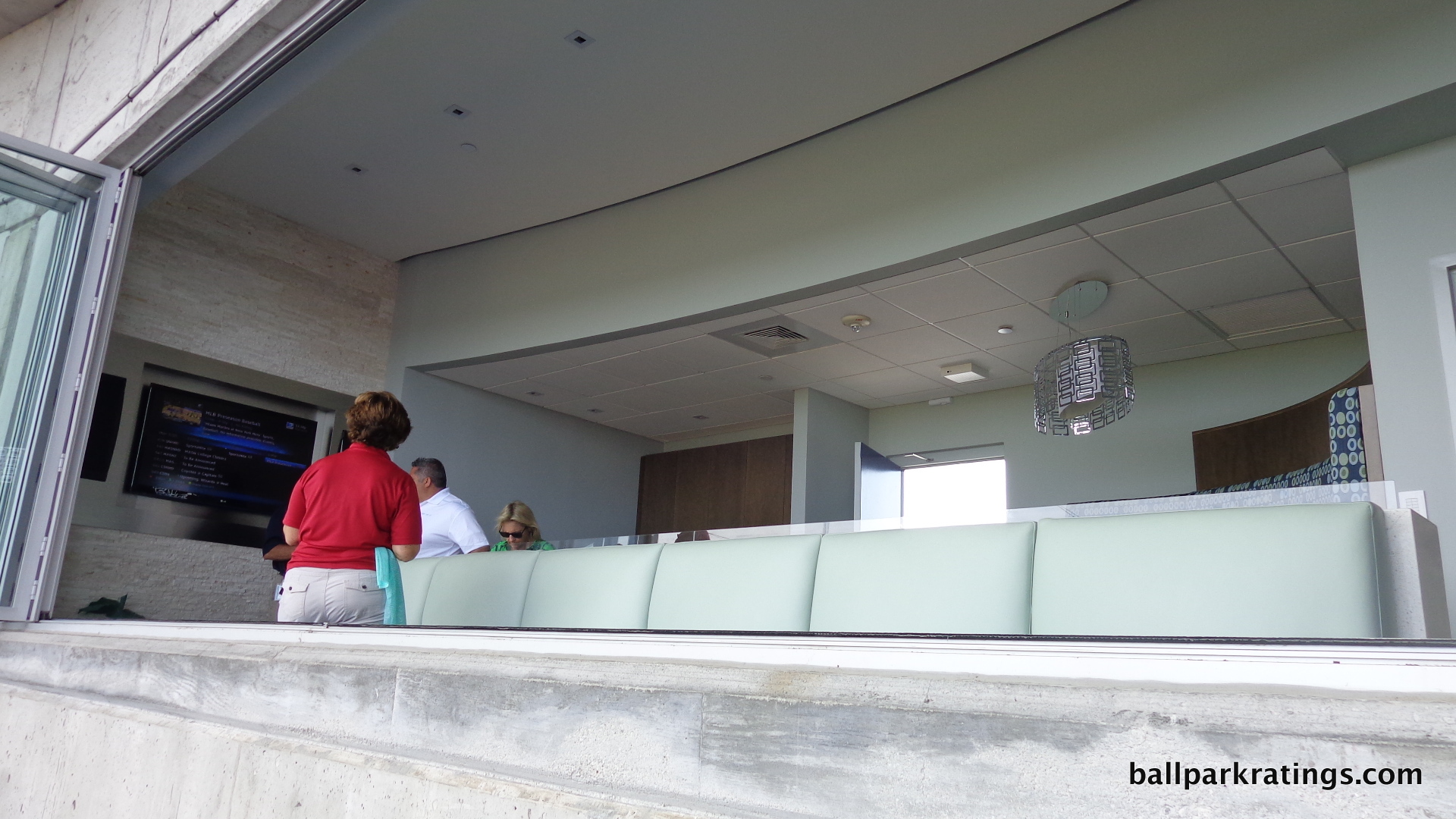
On the other hand, the luxury suites are very nice for spring training, with one in particular looking like it was designed for Fred Wilpon himself. Two of the luxury suites are nice enough, featuring adjustable desk chairs and granite finishings. As you can see in the picture, the other luxury suite is amazing, with sea green seating that looks like a couch.
On the press level, there is at least one “skybox,” a more affordable option featuring a single row of picnic chairs overlooking the field. Groups can rent the left field party terrace in front of the tiki bar, which features three tiers of picnic table seating.
The first three rows behind home plate are sold as “premium box,” but there’s nothing premium about them other than their location.
Score: 1.5/4
Restaurants/Bars/Sitting Areas:
The successful integration of multiple bars and sitting areas into Tradition Field’s footprint is the primary design coup of the series of renovations.
Extending off the narrowest part of the main concourse behind home plate is the Ulti-Met Grill. This area features a series of simple wooden picnic tables near cooking stations. Similar picnic tables are found on the concourse down the 3rd base line before reaching the Tiki Bar.

Tradition Field features three full service bar areas. The Tiki Bar down the left field line is the one most commonly associated with the ballpark. It sports some of my favorite views. Behind home plate near the Ulti-Met Grill, the “Island Girl Mets Red Rock Tavern” Bar is a more basic area of refuge. There are a series of high top tables in this area as well.
The largest bar at Tradition Field is now located in Arrigo Party Zone. As mentioned in the concourse section, this is the best area in the ballpark to sit down and find some space. Featuring multiple blue metal picnic tables, chairs, and drink-rails overlooking the field, this expansive area extends all the way down to the berm.
There is also a picnic area atop the berm consisting of the more basic wooden picnic tables seen on the main concourse.
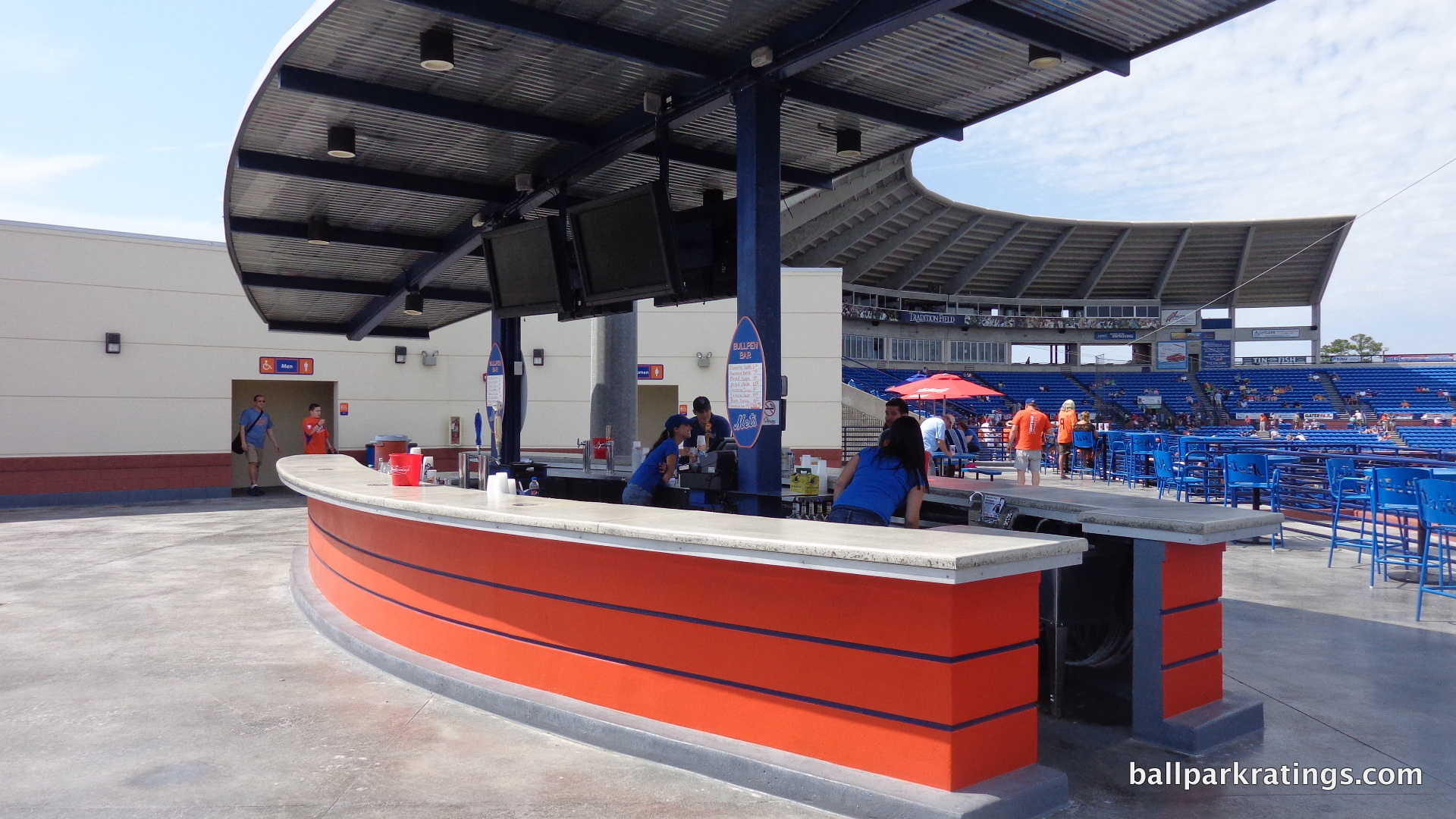
Score: 3/4
Entertainment/Miscellaneous amenities:
They ran out of room on the main concourse, but that didn’t stop the Mets from finding a way to include something for the kids.
Located at street level upon entry inside Gate A, Tradition Field features an inflatable speed pitch game. $1 for 3 throws.
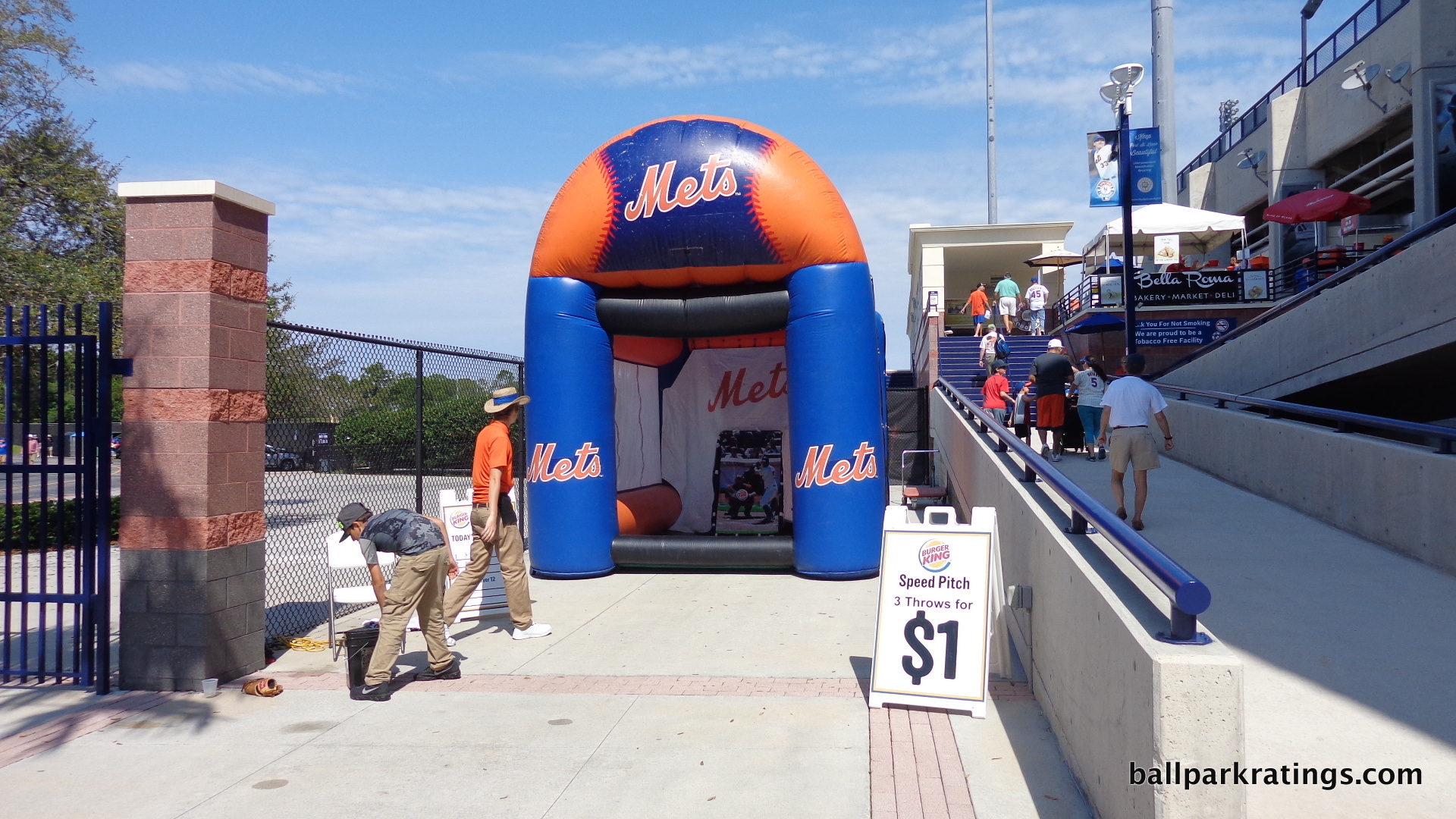
Score: 1/2
Total: 14/20
Atmosphere, Vibe, & Policies
Ballpark Personality:
While the fan-derived atmosphere is a bit lacking, visitors will get a taste of New York when they visit Tradition Field.
From some aspects of the design to the food, you know what team plays here, which is more than you can say for some of the nicer Arizona ballparks. As alluded to in the introduction, the ballpark has a tendency to bring you back to Shea Stadium rather than Citi Field, which isn’t necessarily a bad thing.

Other than the unusually imposing exterior scale, the first aspect fans will notice on the outside is the 9/11 Memorial, a Tradition Field landmark since 2005. Consisting of a piece of steel from the World Trade Center, the sculpture is quite an attractive centerpiece on the outside. Created by Patrick Cochran, it’s a somewhat abstract take on the Twin Towers. Behind the memorial are tributes to three decreased team employees.
Throughout the facility, fans will notice overt references to New York Mets’ history. Behind gate C, team championship banners are posted. The narrow concourse features historical player posters left and right, particularly salient in the Ulti-Mets Grill. Finally, a mural of great moments in Mets history is on the façade below the press box. There is also a plaque area for St. Lucie Mets who made the major leagues on the concourse down the 3rd base line.
However, what most uniquely evokes the Mets’ at Tradition Field is the food. Nathan’s hot dogs and knishes are always available, along with other local foods that seem to rotate throughout the years like deli meats, cannoli, and meatball subs.
One area of disappointment: no Mr. Met sightings the 3 times I’ve been here.
Score: 8/10
Fan Support/Attendance:
While the Mets obviously have a solid fan base, the Mets aren’t known for having robust fan support in Port St. Lucie at Tradition Field, in what is perceived one of the more laid back atmospheres in Florida.
Tradition Field has rarely been in the top half of Grapefruit League attendance in its history, even when the team has been good. Attendance has ranged from 4,000 to 6,000 per game throughout the ballpark’s history, at times even unable to draw the latter mark after deep playoff runs in the mid-2000s.
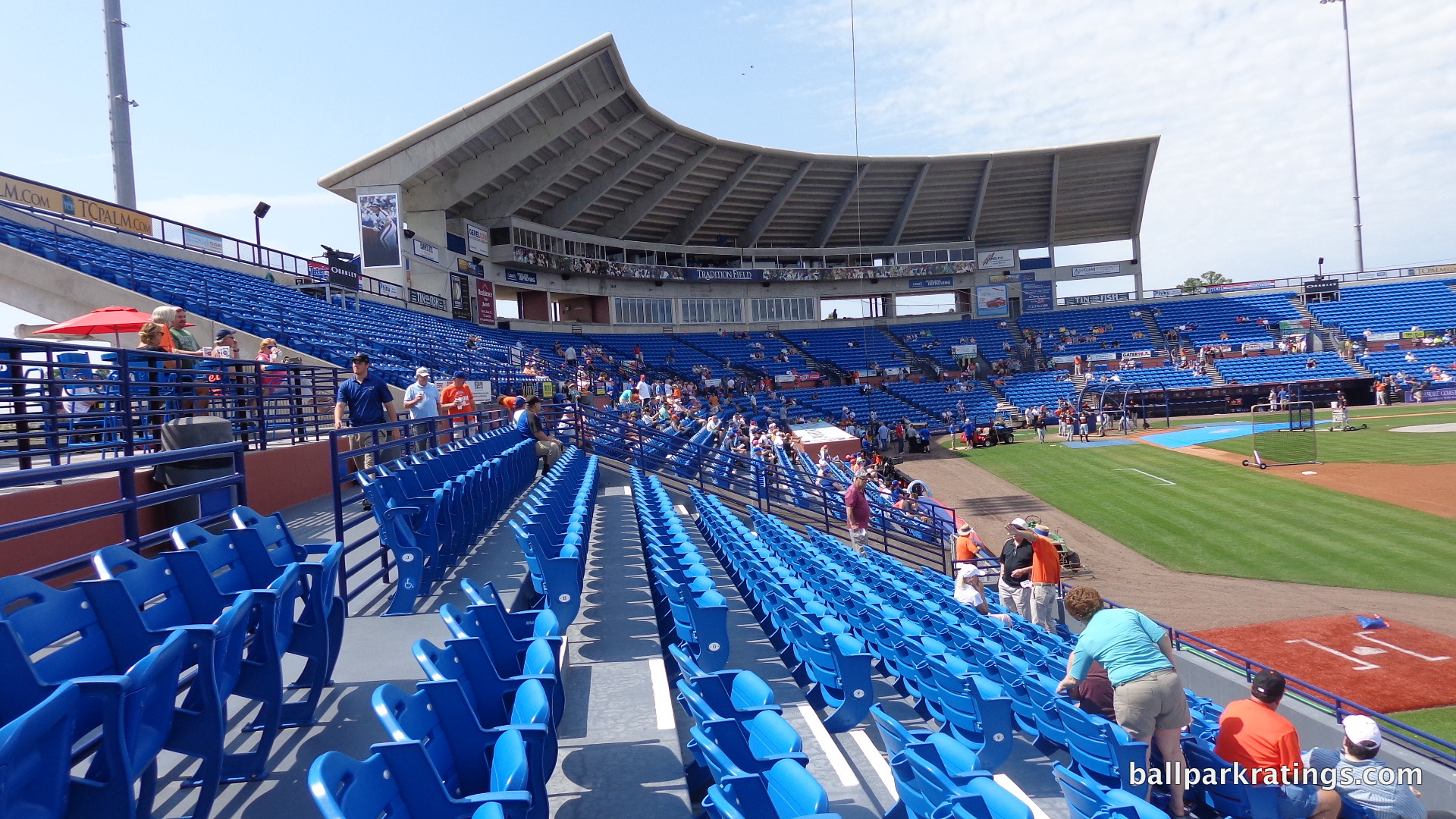
Perhaps the somewhat isolated location on the Treasure Coast has something to do with it, even though fans have been said to love Port St. Lucie’s beaches. There is also a perception that the Port St. Lucie bunch consists of older fans compared to some other venues in Florida.
Tradition Field cracked the 6,000 mark for the first time this decade in 2015. The subsequent World Series run that year should test the potential heights of attendance in Port St. Lucie. Nevertheless, it’s odd the Mets have never had similar attendance to other, large market teams in the north.
Score: 3/5
Ballpark Policies/Fan Friendliness:
For the most part, Tradition Field is a very fan friendly place to see a baseball game.
Unlike their big brother in Tampa, the Mets’ ushers are on the lenient side. Moving around the ballpark is not cumbersome, although ushers will check tickets for the box seats. Fans are welcome to go down and try to get autographs before the game.
Autographs are easier to come by here than at the average spring training park, as the bullpens are in play and the dugouts are rather accessible. Tunnels to the clubhouses for both teams are in their dugout, so it is difficult after the game.
Tradition Field is one of three ballparks in Florida to open only 1 and ½ hours before the game, a substantial quibble in my view, but not a serious misstep. No outside food is also allowed in the ballpark as well.
Perhaps the most fan-friendly aspect to the game-day experience at Tradition Field involves the berm. In all other ballparks with berms, you will be sitting on the grass, perhaps with a towel. Not so here. Unless there is an overflow crowd (rarely happened in the past), fans are allowed to bring their own lawn chairs. That’s a game-changer, totally enhancing the value of berm tickets for fans who don’t want grass stains or hurt backs.
Score: 2/2
Total: 13/17
Conclusion
Bonus:
For making the most out of Tradition Field, loading the small concourse with as many amenities as possible, while maintaining a New York feel through concessions +2
For having an imposing design vision as a Shea Stadium mini-me in 1988, complete with ramps, four stories of gray concrete, the largest press box in spring training at the time, clubhouses accessible in dugouts for both teams (a big deal at the time), and a sprawling cantilevered roof +1
For the best naming rights deal +1For the left field berm +1
For the party decks and drink rail seating +1
For the 9/11 Memorial and Thomas J. White Plaza +1
Score: 6
Yes, pretty low score. But the Mets have done a nice job maintaining the facility, and will continue doing so. Tradition Field will never be the shiniest in Florida, but it’s a place I don’t mind visiting every couple of years. While the Mets were so worried about the long-term future of spring training baseball on the Treasure coast they set up room for another tenant, it now looks like that won’t be necessary, and they’ll be staying here until at least 2023.
While the Mets got such a good deal in the 1980s it set a precedent, they haven’t been fickle about their loyalty to Port St. Lucie, in an era where teams will leave at the drop of a hat under the right circumstances.
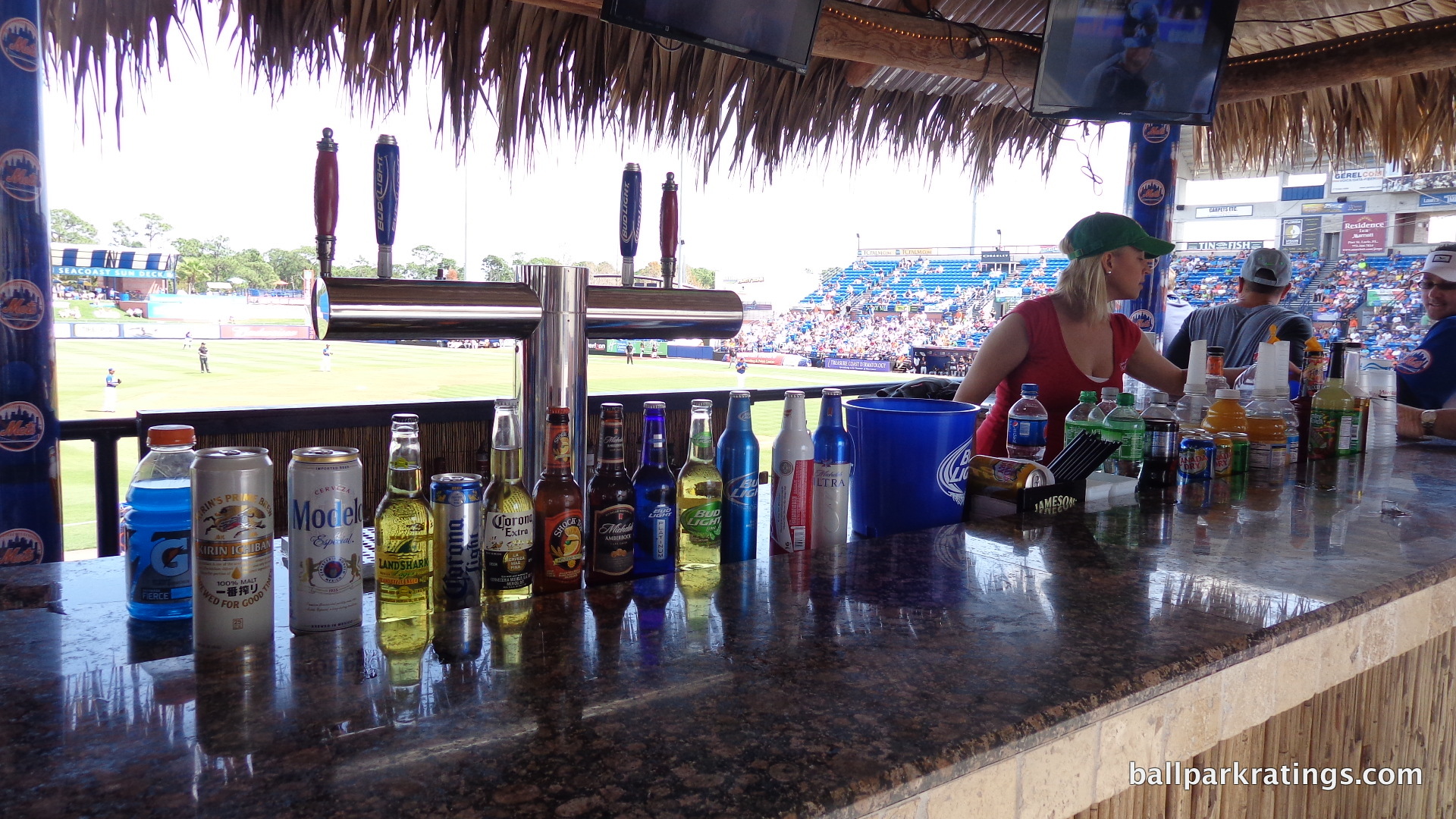
With the Astros and Nationals leaving their respective facilities, along with the Braves and Blue Jays inevitably doing something about their situations, Tradition Field will be at the bottom of the spring training parks by the end of the decade. That is more a reflection of other parks getting better than anything else.
A truly expansive renovation, costing roughly 50 million, doesn’t seem worth it given Tradition Field’s design. The spatial constraints are too severe and the layout is not privy to expansion without completely leveling the structure. So I think if the Mets ever do play in a top facility, it will be a new one (I could be wrong). *Edit 2017: Again, the Mets will be extensively renovating.
But I hope they don’t and continue to tweak with renovations. Despite the low score, I like what Tradition Field brings to the table, representing an ambitious vision of spring training baseball in the 1980s.